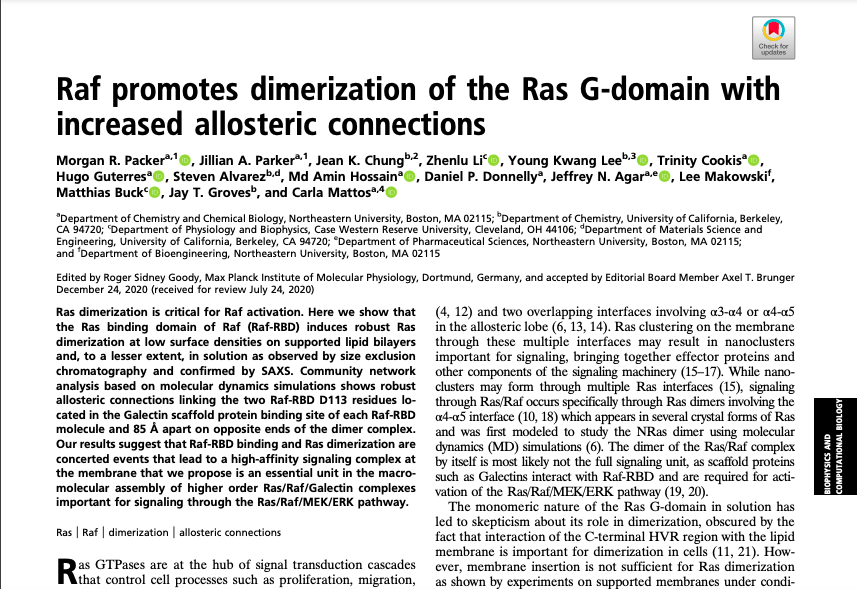Digging into Dimerization:
Way to go Morgan, Jillian, and the team! Our paper published in PNAS demonstrates robust dimerization of Ras induced by the Ras-binding domain (RBD) of Raf Kinase.

Significance
Ras GTPases, KRas, HRas, and NRas control cell proliferation via the Ras/Raf/MEK/ERK pathway through a process in which Ras dimerization is required but not mechanistically understood. Here, we show that Raf-RBD promotes Ras dimerization resulting in strong allosteric linkages between Galectin-binding residues on Raf-RBD at the two extreme ends of the dimer. This suggests that the dimer of the Ras/Raf–RBD complex couples to Galectin dimers to form a multivalent signaling complex for synchronized activation of Raf kinase, providing a new framework to be tested in the mechanistic understanding of Ras/Raf signaling.
Abstract
Ras dimerization is critical for Raf activation. Here we show that the Ras binding domain of Raf (Raf-RBD) induces robust Ras dimerization at low surface densities on supported lipid bilayers and, to a lesser extent, in solution as observed by size exclusion chromatography and confirmed by SAXS. Community network analysis based on molecular dynamics simulations shows robust allosteric connections linking the two Raf-RBD D113 residues located in the Galectin scaffold protein binding site of each Raf-RBD molecule and 85 Å apart on opposite ends of the dimer complex. Our results suggest that Raf-RBD binding and Ras dimerization are concerted events that lead to a high-affinity signaling complex at the membrane that we propose is an essential unit in the macromolecular assembly of higher order Ras/Raf/Galectin complexes important for signaling through the Ras/Raf/MEK/ERK pathway.